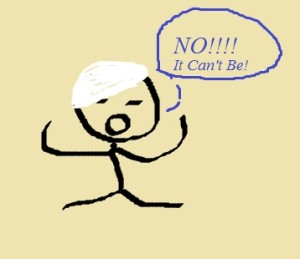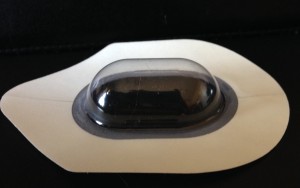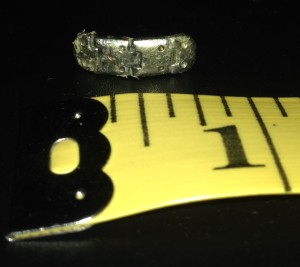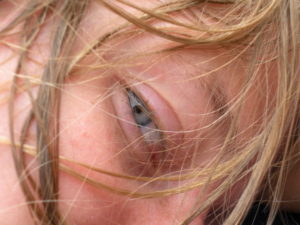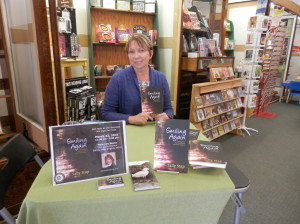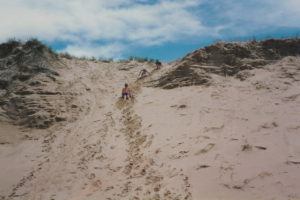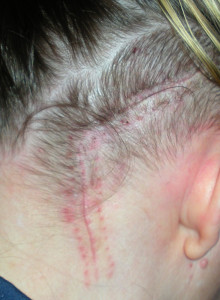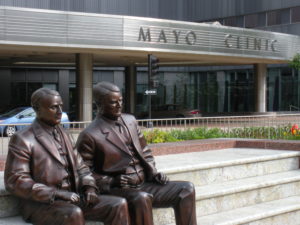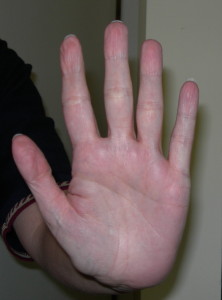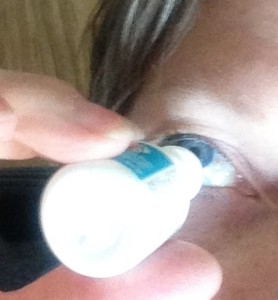 The Recovery Phase:
The Recovery Phase:
First, I have to add something that I didn’t mention in Part 1 or 2. The REASON why we care so much about a dry eye. It can cause serious damage to the cornea and vision loss. Also, a dry or damaged cornea is very painful, which I can say just from having it dry. It is important to have a dry eye examined regularly by an ophthalmologist for cornea damage.
For a few months following brain surgery, I was unable to wear a contact lens in my dry eye. I lubricated it regularly with artificial tears or gel. I learned to primarily use my left eye because my vision is poor and my left eye was corrected with a lens, leaving an imbalance. I was fortunate because, although I couldn’t see progress, my muscles were slowly improving. At about 4-5 months I was able to start wearing a daily disposable lens in my eye, which helped to protect and keep the eye moist. With regular use of eye drops.
One side effect of brain surgery surgery can be double vision. I didn’t realize until after I could wear a lens in my eye that I still couldn’t see things quite right. What I learned is that “double” isn’t like seeing the Doublemint twins (if you remember those commercials). Double can be two images side by side; above each other; or skewed, which is what I have. It’s a combination where one image is a bit to the right and up. Almost in focus but “skewed.” For me, that hasn’t changed. The eyes are in line visually, but see a bit differently.
I also learned how important a proper tear layer is for vision. My dry eye can’t be fully corrected because it is usually either too dry or too wet with drops. Just right is pretty rare, which perfect vision requires.
Some recipients of Acoustic Neuromas lose the feeling in their face in addition to the loss of movement. That is quite dangerous, as you can’t feel when your eye is dry. I never lost feeling, only movement.
My face slowly began to regain movement at 7 months. At about 2-1/2 years, I was able to have the gold weight removed because my eyelid was able to close adequately by itself. I was very excited because I was able to have it removed a couple months before Kendra’s wedding. As you can imagine, following facial paralysis, pictures are a huge deal. Getting rid of the weight in my eyelid was a major milestone in my recovery.
Once again, it was an outpatient procedure. Awake but numbed, I talked to the doctor about minor things while he cut into my eyelid to remove the scar-tissue surrounded weight. After what seemed like hours, but was less than one, he was done. Of course, I had a black eye again to recover from so I laid low for a few days.
When my eye weight was removed, the doctor put a punctual plug into my tear duct. You know, that round little hole that you can see at the inside edge of your lower eyelid? That’s actually a drain, so the plug kept tears from escaping my eye, which kept what little tearing I had in my eye longer. It stayed in for a couple months and then fell out one day. I didn’t have another one put in as I had adjusted to the muscles having to do all the work without the assistance of a weight.
I still have to put eye drops in – sometimes a lot and sometimes not much. I haven’t been able to predict how my eye will behave. Some days I reach a point where artificial tears no longer help and only closing helps. A nap allows my eye time to rest and build up its tear layer. When I awake, it feels better – at least for a while.
There are times when it suddenly waters a lot – usually related to eating or chewing. It isn’t repeatable though or I would be chewing all the time!
The good news is that when crying, I only needed a tissue for one eye and half a runny nose!
Please add comments below about your experience with dry eye.
